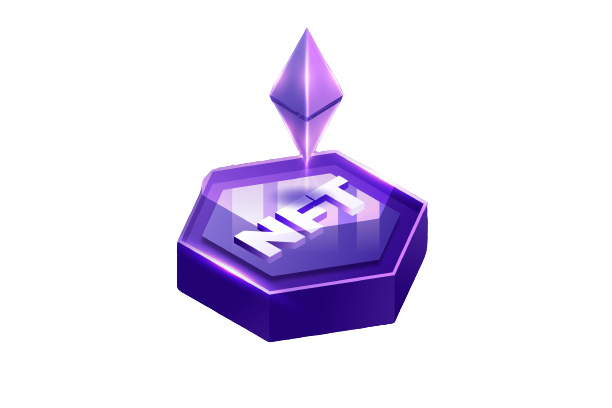
The world of digital art is rapidly evolving, and Non-Fungible Tokens (NFTs) play a significant role. OpenSea proudly announced in 2021 on their website that they were the world’s largest NFT marketplace. They have been running since 2018 and are already one of the world’s leaders within the field.
NFTs stand for Non-Fungible Tokens. A fungible item is replaceable. For instance, a 24-karat bar of gold is – in theory – replaceable with another. A nonfungible item means it cannot be replaced with anything else. It is unique.
NFTs are conceptually like cryptocurrencies but can encompass anything from antiques and artworks to collectibles like trading cards or other unique items.
The NFTs are stowed in a blockchain network for authentication and validation; each sold as a whole, unlike cryptocurrencies which can be divided into smaller units. As a result, NFTs do not retain their value when split into parts. Although duplication of the same NFT by the artist is possible, the number of copies always remains known – so each copy can be sold separately.
OpenSea is a marketplace for NFTs, which you can take part in today.
OpenSea is the world’s first and largest marketplace for buying, selling, and collecting digital assets. They offer a wide variety of digital assets, including in-game items, crypto art, digital collectibles, and more. OpenSea also allows you to create and manage your own digital collection. You can buy or sell any digital asset on OpenSea.
OpenSea is the best place to find rare digital assets. You can search by category, popularity, or price. They also have a blog that covers all things related to digital collectibles and the metaverse.
Additionally, OpenSea announced the launch of their mobile app on 14 October 2021. This is exclusive since there are few NFT Marketplaces that offer mobile apps.
They say: “Making NFTs more available to all is one of our core missions, and we believe this is a big step in an exciting direction.”
In many ways, OpenSea is comparable to the status Uniswap has among crypto exchanges in that artists can self-list their NFTs. Artists do not have to pay any commissions or platform fees in order to create a marketplace for their NFTs. With Uniswap, anyone can list cryptocurrencies on their platform without following a lengthy and tedious listing process. The same goes for OpenSea, but with NFTs.
Artists can create their NFTs merely by entering simple information like name, category, immutable and mutable data. The ownership of the NFTs is allotted after creation, enabling artists to sell or transfer the NFTs right away. Instead of worrying about listing their artworks, artists can focus on making art and creating new artworks for the marketplace.
Furthermore, OpenSea is “compatible with open blockchain standards, ” meaning you can create your work on other platforms and then return to sell it on OpenSea.

There are different ways in which NFT Marketplaces display their NFTs: latest bids, the remaining time of an auction, etc. It is entirely up to you to decide how you want to view and use your tokens. In OpenSea, you have two options for selling your NFTs: through the “Buy Now”-function or through auctioning.
If you move into one of the specific NFTs, you will see an image of the token page. The page includes information on the reserve price, if any offers are made, the artist’s price history, and more. In some cases, the artist might also donate a portion of the proceedings from the auction. For example, it could be a donation to The Rape Foundation, a foundation made to support and treat rape victims.
The commission for OpenSea is only 2,50%.
Typically, when you purchase an NFT from an NFT Marketplace, the marketplace will charge you a fee for enabling the sale. This fee is often a percentage of the NFT’s sale price and is usually paid by the buyer. It is similar to how art galleries typically take a cut of any sales of paintings or other artwork placed in their galleries.
When purchasing an NFT on OpenSea, the buyer pays 2.50% to the marketplace with no listing fees involved. Of course, the creator of the NFT can also choose to take a fee on the final sale amount as well, but this is not expected.
As a result, if you buy an NFT worth USD 100 at OpenSea, you will have to pay USD 102.50 in total (given that the creator of the NFT does not charge a fee themselves).
OpenSea stands out from other NFT Marketplaces by offering a referral program. If you refer someone to the platform and they buy an NFT, you could collect a reward of 2.50% of the sale price – so in the case of a unique and expensive item worth USD 100,000, you’d get USD 2,500! This is hugely different from crypto exchanges, which usually give the referrer a portion of their own trading fees, separate from the trade amount as OpenSea does.
A few NFT Marketplaces take credit and debit cards, as well as PayPal deposits. However, OpenSea does not allow withdrawals or deposits via credit/debit cards or PayPal; you need to have previously held the cryptos supported by OpenSea in order to participate.
On OpenSea, you can use Ethereum (ETH/WETH), SOL, AVAX, USDC, BNB, and DAI. In addition, other payment tokens are supported, but non-crypto currencies like USD and Euro are currently not.
But if you do have cryptos, you can freely explore the NFTs available at OpenSea.
OpenSea has seen a surge in activity in recent months as the NFT craze has taken off. In February 2021, the platform surpassed $100 million in total sales volume. This figure is expected to grow even higher in the coming months as more people discover the world of NFTs.